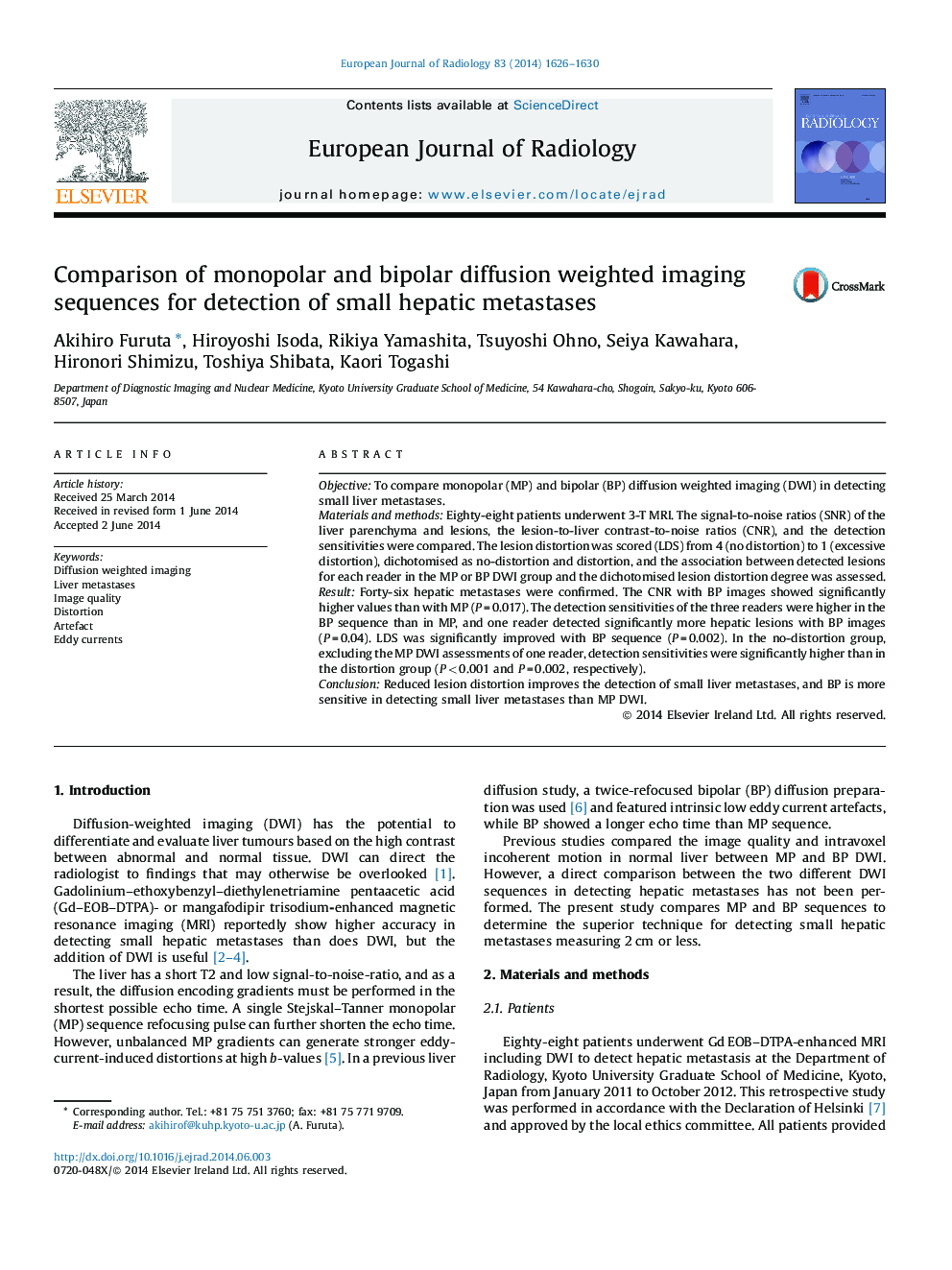| Article ID | Journal | Published Year | Pages | File Type |
|---|---|---|---|---|
| 4225456 | European Journal of Radiology | 2014 | 5 Pages |
•The CNRwithBP showed significantly higher values than inMP.•TheSNRwasnot significantly different betweenthe twomethods.•The detection sensitivities ofthe threereaders were higher in the BP than in MP.•The lesion distortionreducein theBP groupthan inMP.•It is related in lesion detection sensitivity and lesion distortion.
ObjectiveTo compare monopolar (MP) and bipolar (BP) diffusion weighted imaging (DWI) in detecting small liver metastases.Materials and methodsEighty-eight patients underwent 3-T MRI. The signal-to-noise ratios (SNR) of the liver parenchyma and lesions, the lesion-to-liver contrast-to-noise ratios (CNR), and the detection sensitivities were compared. The lesion distortion was scored (LDS) from 4 (no distortion) to 1 (excessive distortion), dichotomised as no-distortion and distortion, and the association between detected lesions for each reader in the MP or BP DWI group and the dichotomised lesion distortion degree was assessed.ResultForty-six hepatic metastases were confirmed. The CNR with BP images showed significantly higher values than with MP (P = 0.017). The detection sensitivities of the three readers were higher in the BP sequence than in MP, and one reader detected significantly more hepatic lesions with BP images (P = 0.04). LDS was significantly improved with BP sequence (P = 0.002). In the no-distortion group, excluding the MP DWI assessments of one reader, detection sensitivities were significantly higher than in the distortion group (P < 0.001 and P = 0.002, respectively).ConclusionReduced lesion distortion improves the detection of small liver metastases, and BP is more sensitive in detecting small liver metastases than MP DWI.
